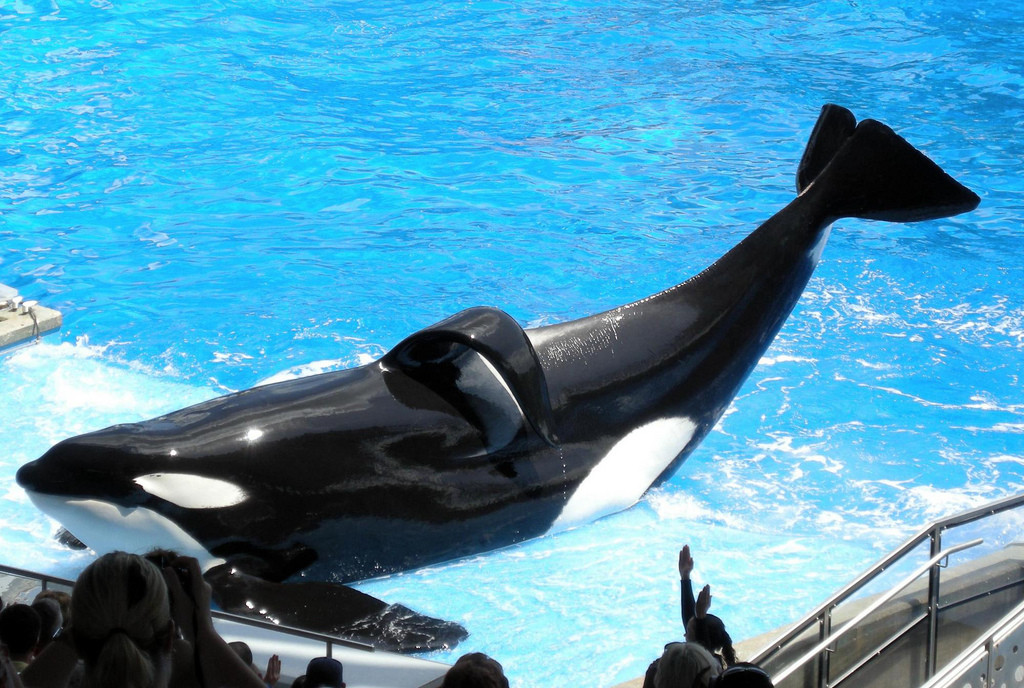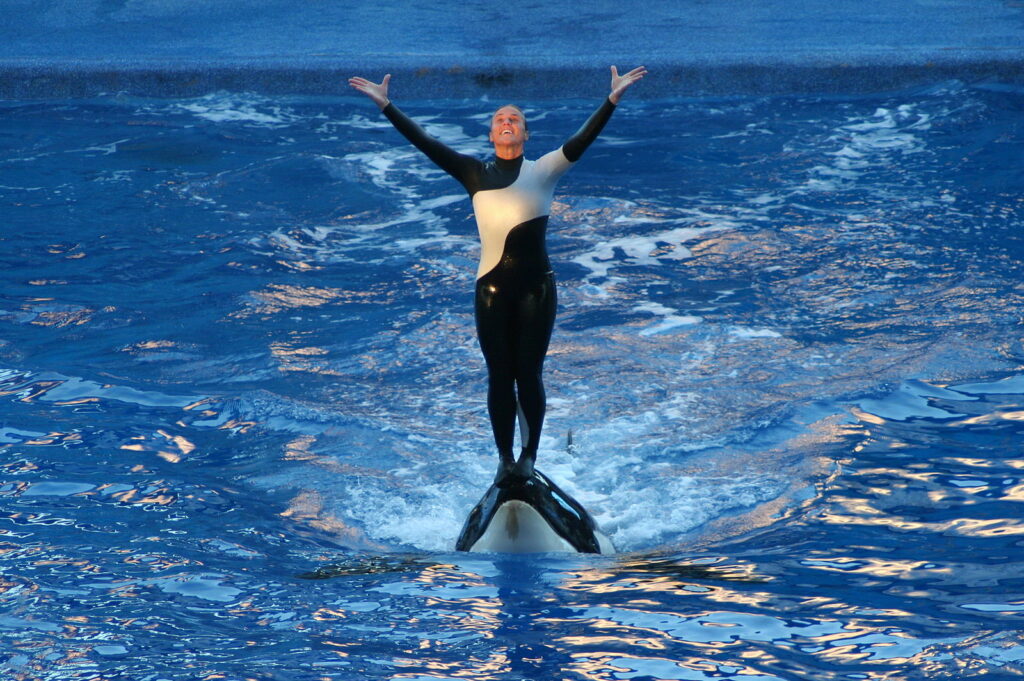Few animals have gained the kind of fame – and notoriety – as the orca known as Tilikum.
He was captured off the coast of Iceland at the age of two. He was then held in captivity for the rest of his 35 years of life. Most of that time was spent in Orlando, performing in Seaworld’s highly popular orca shows.
Seaworld has always maintained that it takes the very best care of its orcas. But a highly publicized killing in 2010 converted Tilikum into a symbol of everything that is wrong with marine parks.
From Tilikum’s very first killing in 1991 to the controversy that unfolded in 2010, this is a story that continues to have significance for animal enthusiasts all over the world.

Tilikum’s History of Violence
The first time that Tilikum killed a human was in 1991. 20-year-old Keltie Byrne, who worked at Sealand of the Pacific in Vancouver, Canada, slipped and fell into the water.
She was a marine biology student who worked part-time at the aquarium. She had been performing a routine clean-up after the day’s final orca show when she suddenly lost her balance and went into the orca’s pool.
Apparently believing Keltie to be a new kind of toy, three orcas, including Tilikum, came rushing at her and pulled her underwater. At this point, the trainers spotted Keltie in the water and rushed into action. They threw her a life ring and used a hook pole to try and grab her. But the orcas were too fast and too strong.
They tossed her between them and pulled her deep under the water. Keltie resurfaced three times, screaming and calling out for help, but the trainers couldn’t reach her.
As one of the orcas continued to bite and toss her, the other two prevented the trainers from intervening. After being pulled under for a third and final time, Keltie finally floated up to the surface, dead.
Sealand closed less than two years after that tragic accident. But that didn’t put a stop to Tilikm’s killing.
The next incident occurred in 1999 when a 27-year-old named Daniel Dukes snuck into her sleeping pool at night. By this time, Tilikum had been bought by Seaworld (along with the other two orcas that had been involved in Keltie’s death) and was one of their star performers.
No one knows exactly why he did it, but after waiting for the park to close, Dukes hid himself until the guards left and then entered Tilikum’s pool in nothing but his swim trunks. Once in the water, Tilikum pulled him under until he drowned.
An autopsy also found that his scrotum had been “gnawed off” by the giant 12,000-pound whale. Police ended up pinning the blame on Daniel Dukes himself, who they said had no business being in the pool alone with the predator.
At this point, the first killing could be explained as an overly aggressive form of play. The second, as bad judgment on the part of the victim. But when Tilikum killed for the third time in 2010, the brutality of the act left no doubt that this time, the killing was deliberate.
No One Knows Why Tilikum Killed His Trainer
Dawn Brancheau was an experienced trainer who had spent years cultivating a loving, trusting relationship with Tilikum. And by all accounts, Tilikum returned that love to Dawn, forming a bond that to many seemed very special.
But all of that only makes what happened on February 24, 2010 all the more shocking. It was right after a “Dine with Shamu” performance, in which aquarium guests could watch Tilikum perform stunts from screens that projected the show to them while they ate dinner.
Dawn was lying with her face next to Tilikum when suddenly the whale grabbed hold of her and pulled her into the water as he had done with his two previous victims.

As Tilikum dragged the bewildered trainer underwater, he simultaneously began thrashing her around “like a rag doll” until part of her arm was ripped off and the top of her head was cut off.
It was later determined that she died of either drowning or from being bludgeoned to death, though which came first we don’t know. Either way, after a few cruel minutes in which the guests below screamed in horror, Dawn’s limp body eventually emerged in the orca’s mouth.
It took the other trainers 45 minutes to get Tilikum to finally release Dawn’s mangled body. When they did, the extent of the violence became clear. Clumps of hair and skin from Dawn’s scalp floated about in the pool, while the part of her arm that was ripped off could also be seen.
Tilikum was placed in a separate pool from then on, isolated from the public. But as much as Seaworld tried to hide him, this was one story that was not going away.
“Blackfish” Sparked a Controversy That Continues to This Day
When news of the killing became a major news story, many people were understandably shocked and horrified by such a public and brutal act. But rather than blame the animal, they soon turned their attention to the park itself and even the marine park industry as a whole.
One of those critics was director Gabriela Cowperthwaite, whose 2013 film about Tilikum sparked a controversy that has lasted for years.
The interesting thing is that Cowperthwaite herself never saw anything wrong with Seaworld and aquatic parks like it until she read about Dawn’s death in 2010. Before that, she had taken her kids to Seaworld regularly and only saw the happiness the animals brought to the crowds, not the suffering involved.
But reading about Tilikum in 2010, Cowperthwaite became intrigued by the fact that this was not Tilikum’s first act of violence.
That led her to investigate the industry as a whole and eventually led to the creation of “Blackfish.” This is a documentary that presents Seaworld as, not an aquatic paradise, but rather an abusive environment that drives its orcas to madness.
The documentary provided fuel for the already growing cries to ban orca shows altogether. A number of famous artists like Willie Nelson and Barenaked Ladies even canceled their scheduled Seaworld shows.
Finally, in 2016, California banned all captive breeding of orcas. A year later, Seaworld began phasing out the use of orca shows.
Tilikum died a year later of a lung infection – 33 years after being captured as a baby off the coast of Iceland. But even though he died over six years ago, he will no doubt remain a symbol of the controversy surrounding aquatic parks for years to come.

